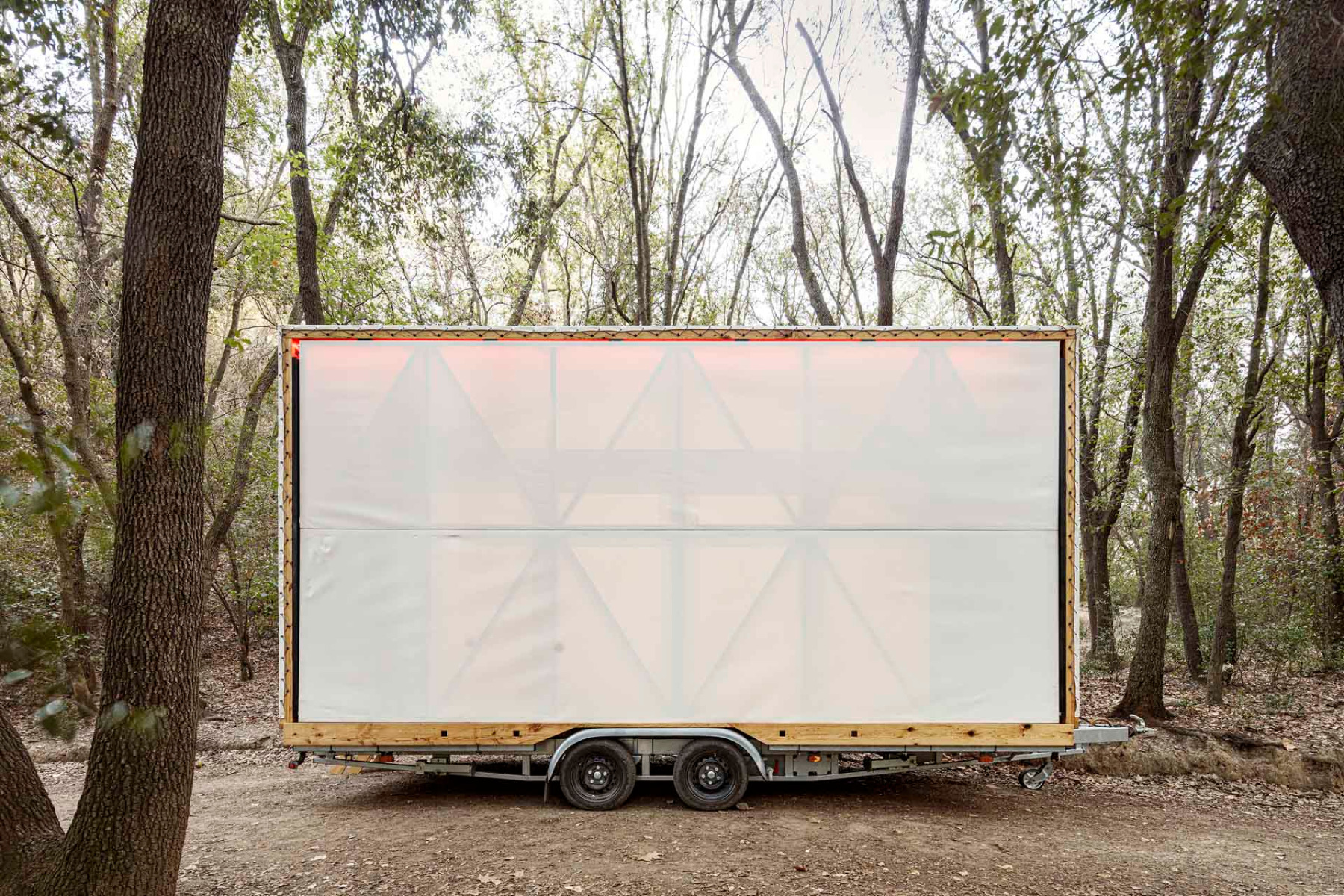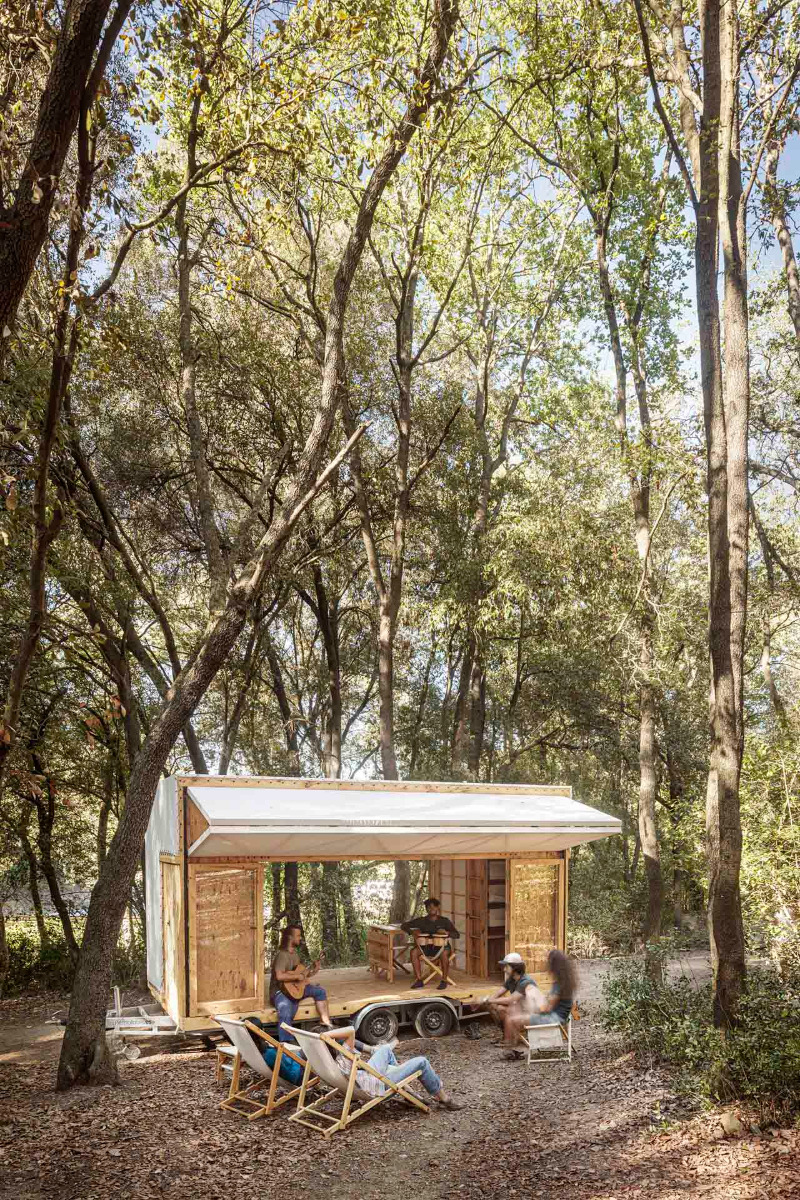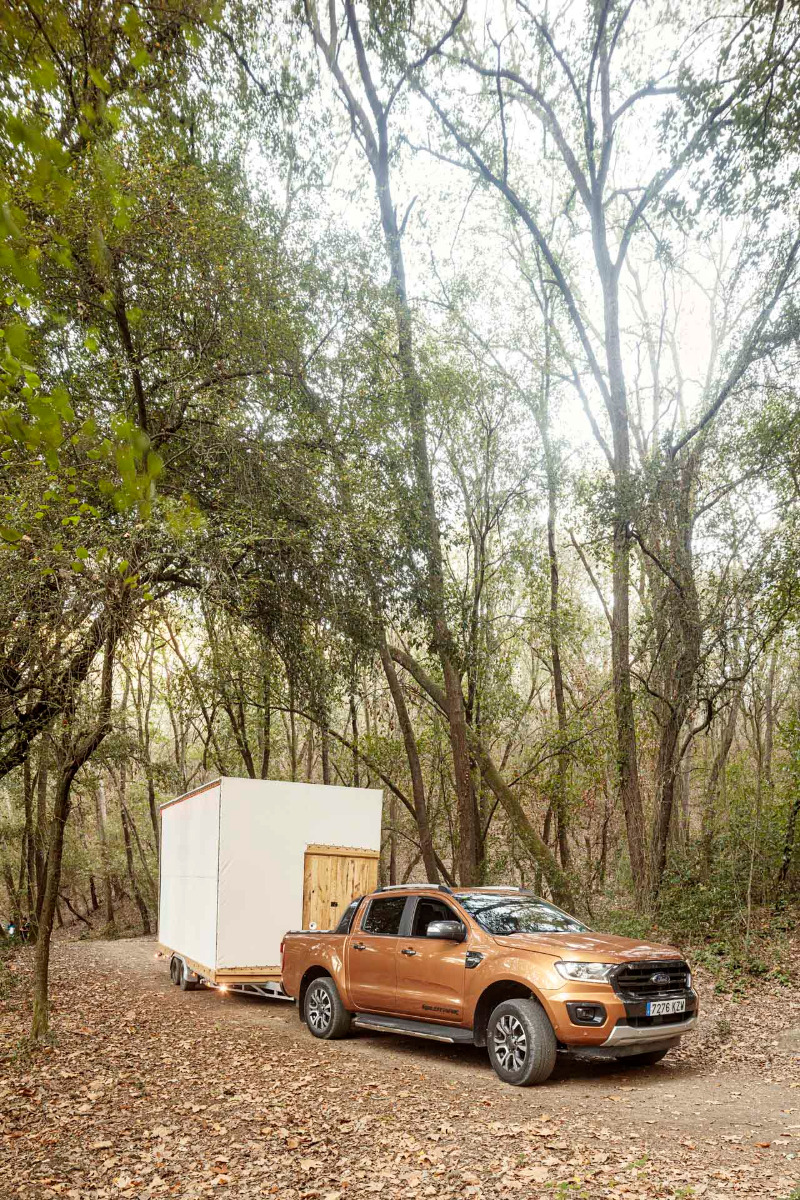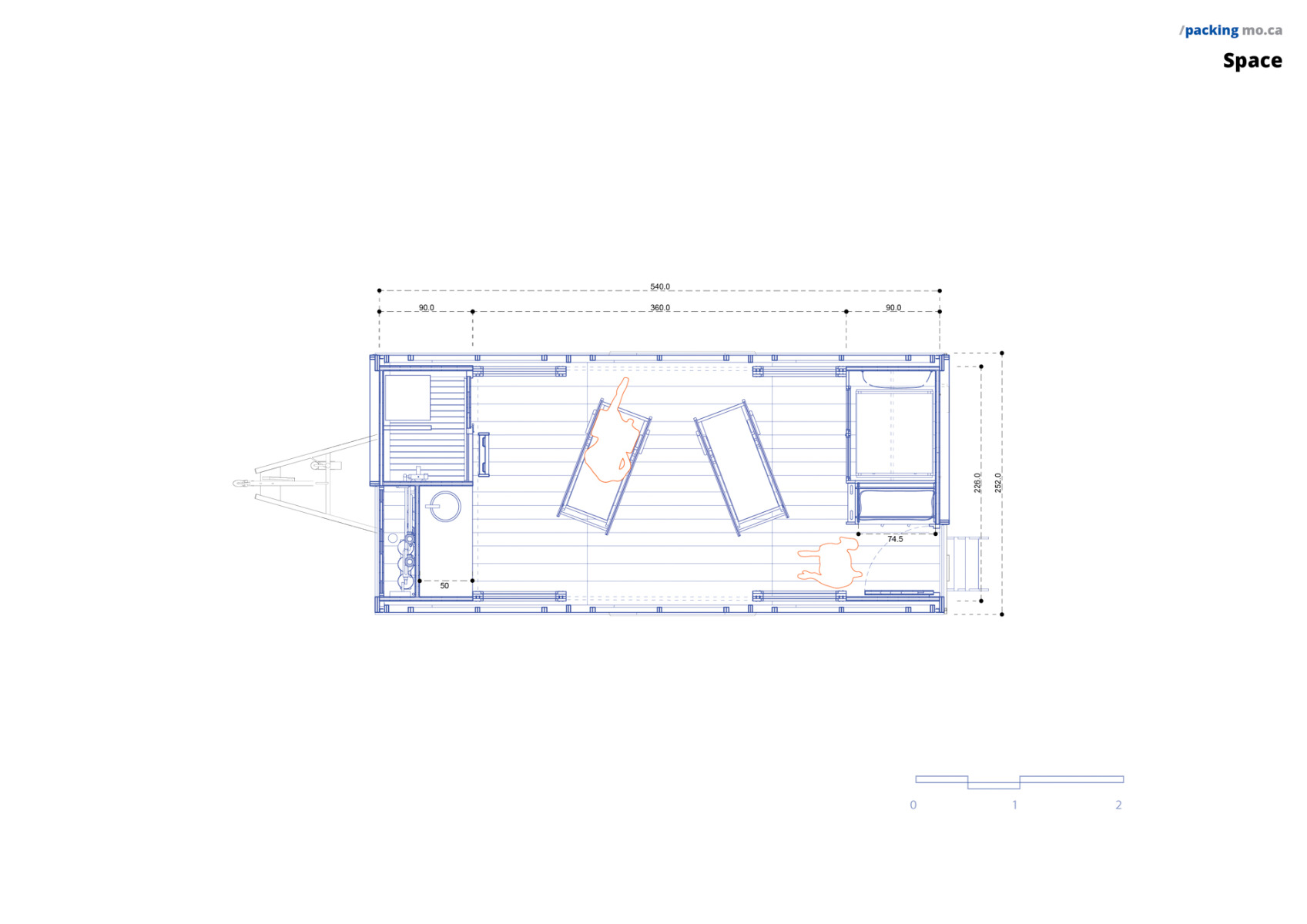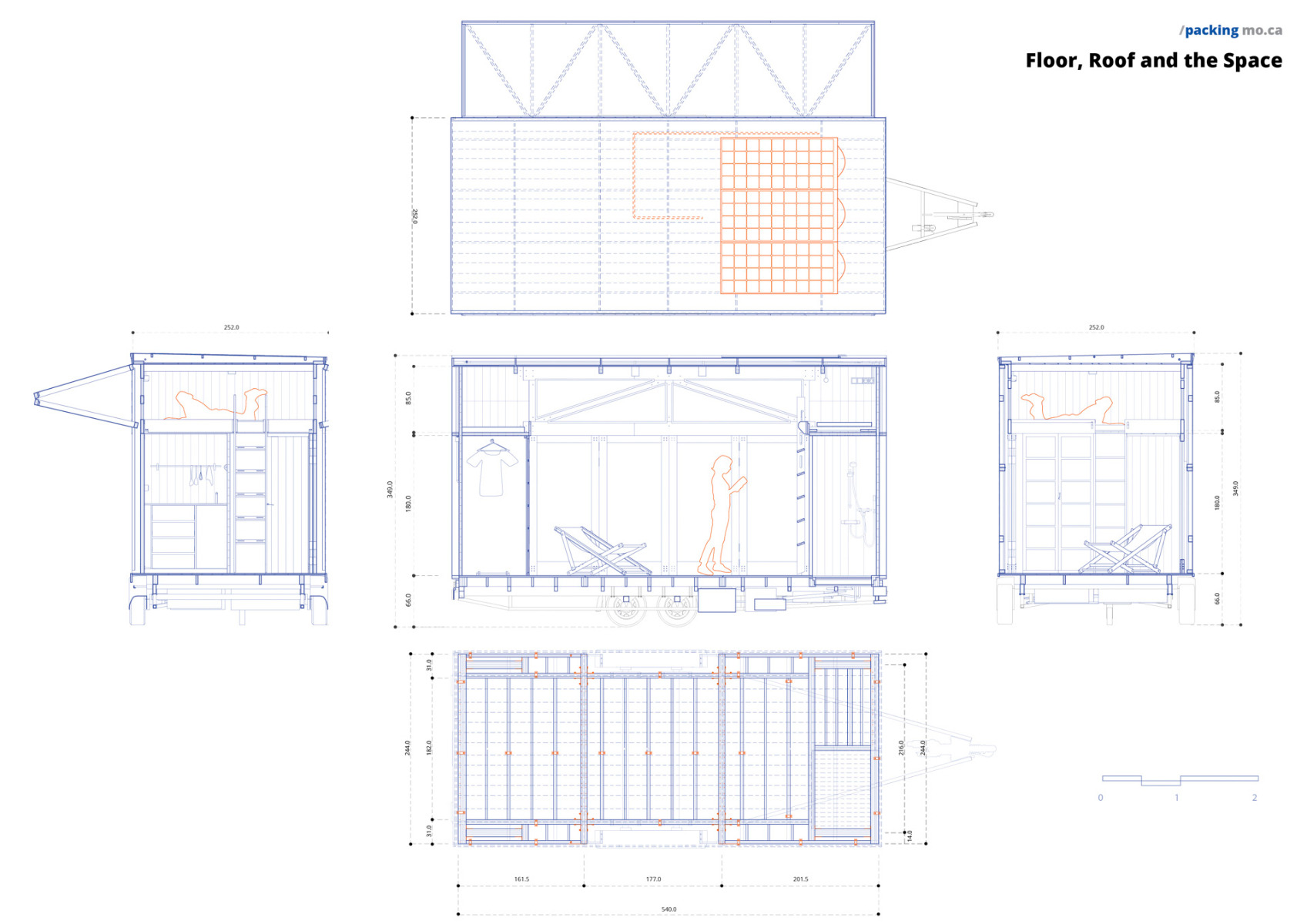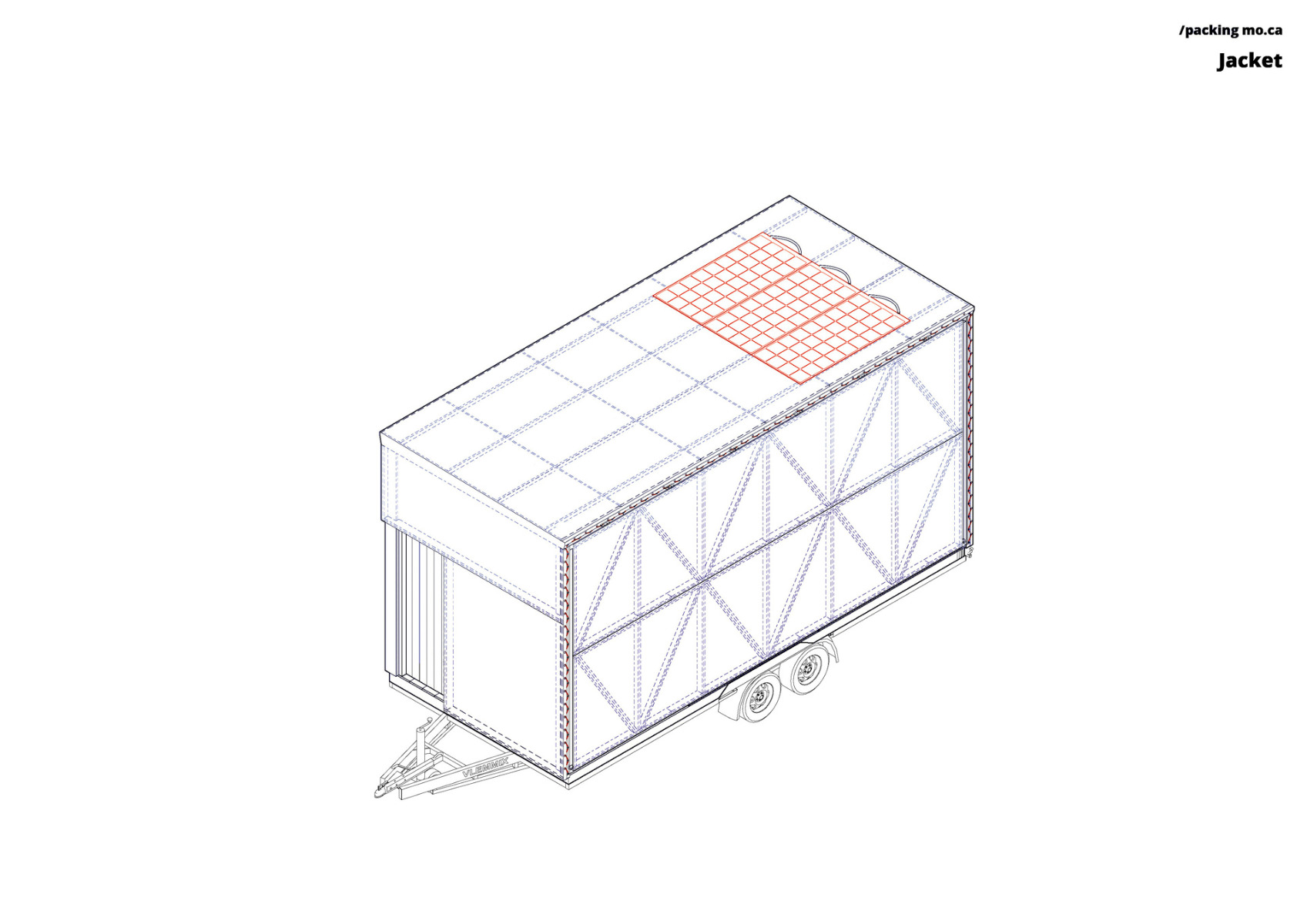Micro living with maximum freedom
IAAC designs Mobile Catalyst near Barcelona

The two-person mobile unit is mounted on a trailer. © Adrià Goula
Students and researchers from the Advanced Ecological Buildings & Biocities Masters programme at the Institute for Advanced Architecture of Catalonia (IAAC) have developed the Mobile Catalyst, or MOCA for short, at the Valldaura Labs near Barcelona. The self-sufficient home is made of cross-laminated timber and can accommodate two people.


The central room of the Mobile Catalyst is convertible and can be connected to the surrounding nature when open. © Adrià Goula
Prototype for self-sufficient travellers
The mobile prototype is equipped with basic household necessities. A trailer carries a platform 5.4 m long and 2.4 m wide, on which the 3.6-m-high house rests. At the front and back of the trailer are two boxes: the utility toolbox contains a kitchen, a shower area, a waterless humus toilet box and a supply cabinet for electricity and water pipes. The activity toolbox provides storage for the customised furniture and contains surfaces and tools for activating the central space. There are two beds on a mezzanine level. The total construction must not exceed 3,500 kg.
Convertible space
The central living area can be completely opened up by means of a folding façade of wooden frame walls covered in white, water-repellent cotton fabric. Four glass doors on each side complement the fabric façade, allowing the space to adapt to the weather, the time of day and the needs of the users. When closed, the central space is shielded from the outside world. When open, the interior is connected to the surroundings.


When closed, the central room is shielded from the outside world. © Adrià Goula
Climate-friendly construction
The cross-laminated timber panels used were produced by the students themselves. The wood comes from the grounds of the IAAC laboratory in Valldaura, in the Collserola Nature Park. Wooden dowels hold the structure together and allow the house to be dismantled and recycled.


Mobile Catalyst draws all its energy from the sun. Graphic © IAAC
Self-sufficient living
The mobile home draws all its energy from the sun and is designed to run 24 hours a day without recharging. On the roof is a set of three slightly flexible monocrystalline solar panels connected to a MultiPlus inverter and a back-up battery. The humus toilet system uses no water for flushing, so black water is only produced during cooking and cleaning. This saves disposal and treatment costs. Shower water is collected in a drip tray and stored in the grey water tank. It is then filtered through a three-stage system, treated with a UV filter, pumped into the recirculation tank and returned to the system.
Architecture: Students of the Master's program in Advanced Ecological Buildings & Biocities (MAEBB) of the Institute for Advanced Architecture of Catalonia (IAAC), class of 2022/23
Direction: Vicente Guallart, Daniel Ibañez and Michael Salka
Academic coordination: Esin Zeynep Aydemir
Location: Valldaura Labs of the Institute of Advanced Architecture in Catalonia (ES)
Students: Austin Brown, Basant Abdelrahman, Carla Alvear Arizaga, Jacek Antoni Kostrzewa, Jackie Williams, Julia Aurora Guzmán, Larsen Bidstrup, Raffaele Schiavello, Ruhani Adlakha, Sneham Pandey, Mariano Rodriguez Alonso, Sadegh Raoufi Fard, Charles Casbolt, Aishwarya Balsekar, Disha Arora, Indraneel Joshi, Laila Nabulsi, Nicolas Rotta, Nishanth Maheshwaran, Pradyumna Vikharankar, Prati Jain, Rujuta Chauhan, Shruti Sahasrabudhe and Santwana MalakarProject
Laboratory management: Bruno Ganem Coutinho, Lorenzo Salinas
Sponsors: Luz Negra, Tallfusta





